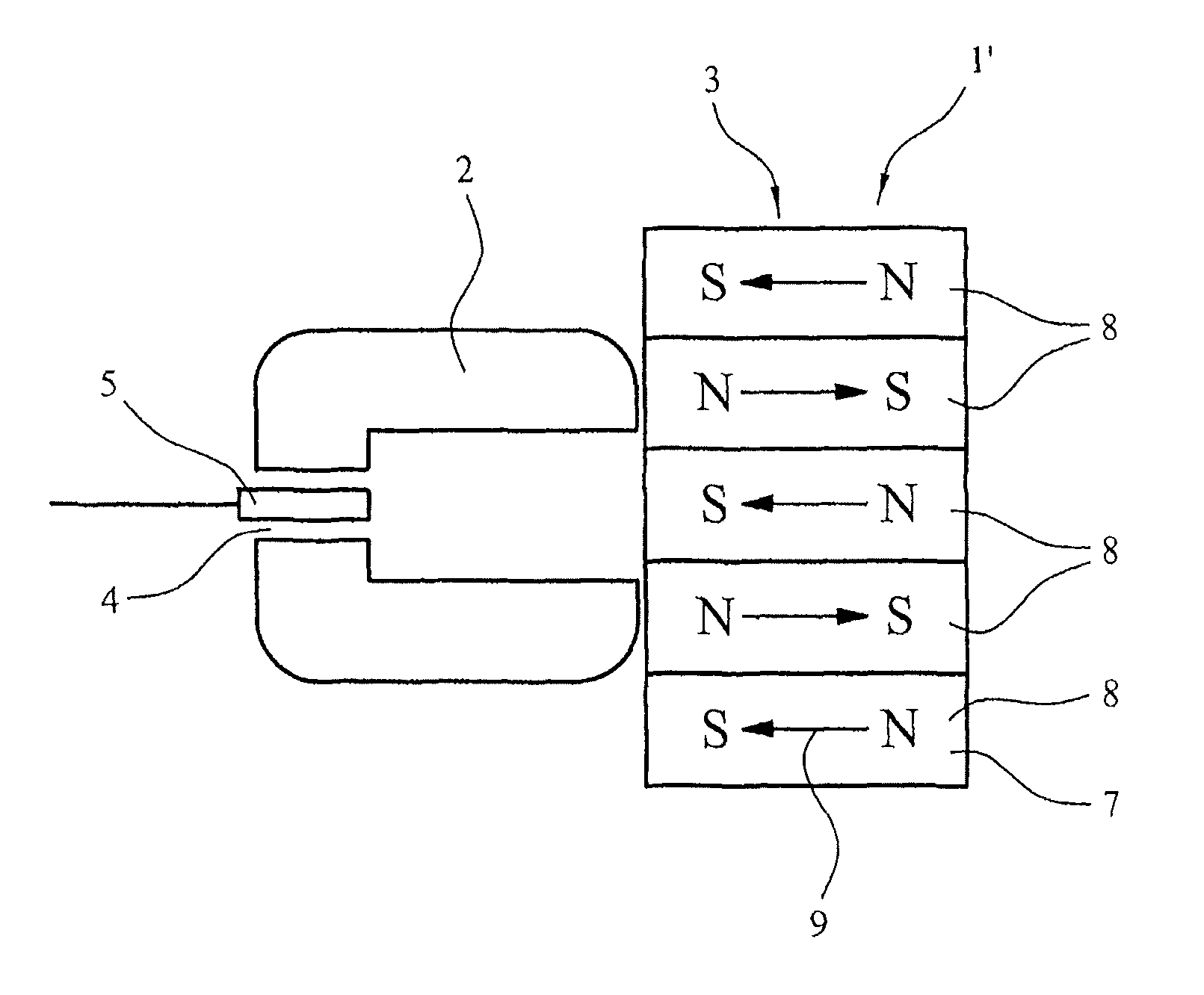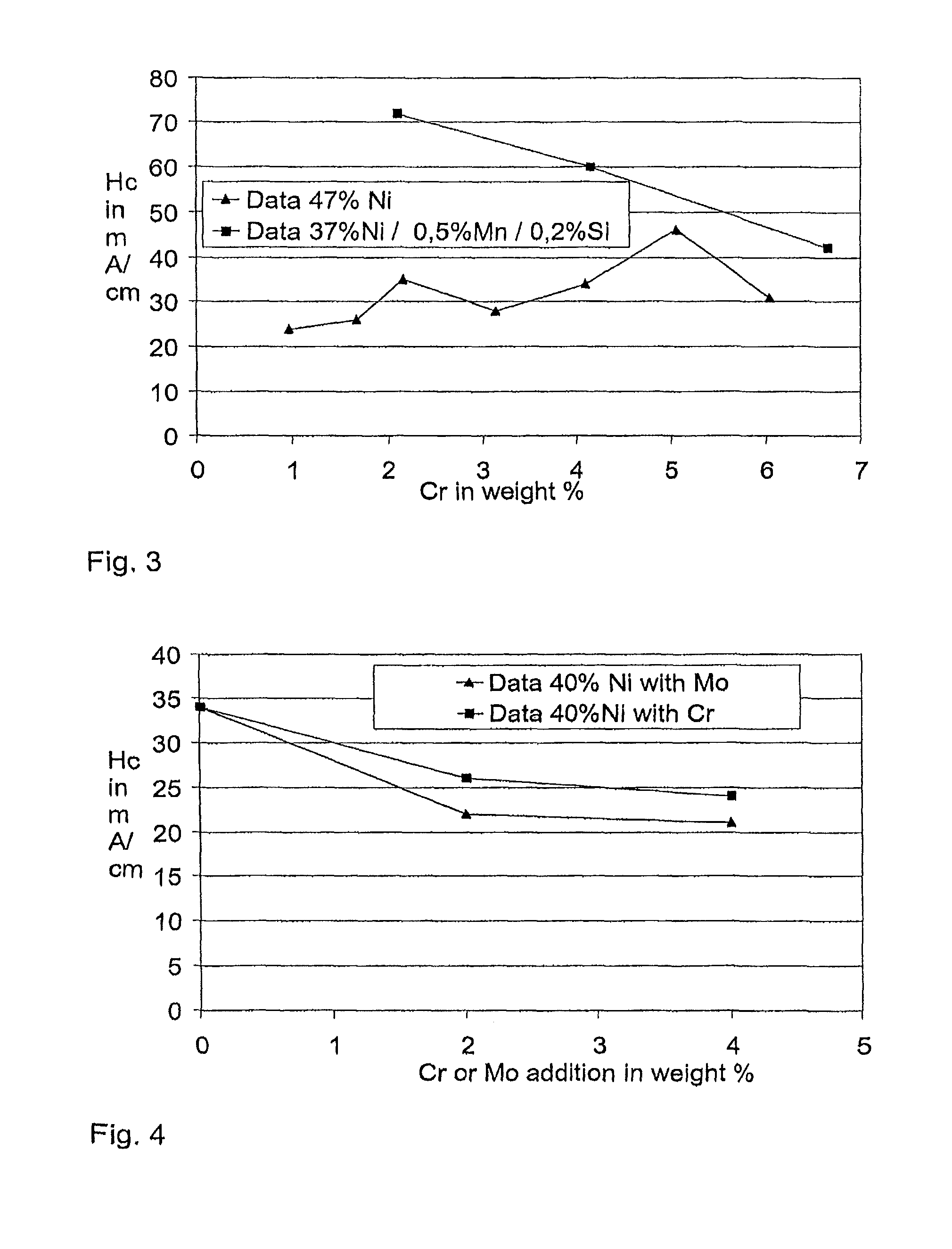Low hysteresis sensor
a sensor and low hysteresis technology, applied in the direction of using electrical/magnetic means, magnetic materials, electrical/magnetic measuring arrangements, etc., can solve the problems of increasing the linearity of the sensor, the disadvantage of complex structure and operation of the sensor, and the reduction of material hysteresis, so as to achieve the effect of increasing the accuracy of the sensor and reducing the hysteresis of the material
- Summary
- Abstract
- Description
- Claims
- Application Information
AI Technical Summary
Benefits of technology
Problems solved by technology
Method used
Image
Examples
first embodiment
[0030]In a first embodiment, the magnetic field source comprises a direct current or an alternating current which generates a magnetic field as it flows through a conductor. The magnitude of the generated magnetic field is proportional to the magnitude of the flowing current. In a particular embodiment, the sensor may further comprise at least one winding wound around the flux conducting soft magnetic element. The current to be measured flows through this winding.
second embodiment
[0031]In a second embodiment, the magnetic field source comprises a permanent magnet which is movable relative to the flux conducting soft magnetic element. The magnitude of the change of the generated magnetic flux is proportional to the magnitude of the change in the position of the permanent magnet. As a result, the position of the permanent magnet can be determined from the change of the magnetic flux. In a particular embodiment, the permanent magnet can be connected to an object the position of which is to be measured. This may involve a linear or rotary relative movement which is detected by the sensor.
[0032]In a particular, the permanent magnet may have a plurality of areas with alternating directions of magnetisation. These areas may be provided with a plurality of magnets mounted on a yoke. Alternatively, the permanent magnet may be a single unit with varying magnetisation.
[0033]The flux conducting soft magnetic element may be shaped in various ways. In one embodiment, a si...
PUM
| Property | Measurement | Unit |
|---|---|---|
| temperature | aaaaa | aaaaa |
| temperature | aaaaa | aaaaa |
| Curie temperature | aaaaa | aaaaa |
Abstract
Description
Claims
Application Information
 Login to View More
Login to View More - R&D
- Intellectual Property
- Life Sciences
- Materials
- Tech Scout
- Unparalleled Data Quality
- Higher Quality Content
- 60% Fewer Hallucinations
Browse by: Latest US Patents, China's latest patents, Technical Efficacy Thesaurus, Application Domain, Technology Topic, Popular Technical Reports.
© 2025 PatSnap. All rights reserved.Legal|Privacy policy|Modern Slavery Act Transparency Statement|Sitemap|About US| Contact US: help@patsnap.com



